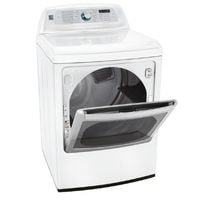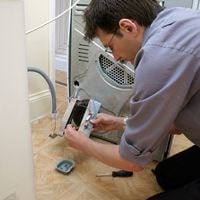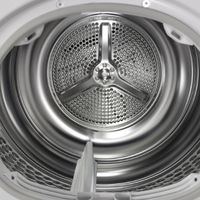Kenmore elite dryer troubleshooting. The Kenmore Elite electric dryer is popular because it has a 7.5 cubic feet capacity making it great for all types of fabrics, including bulkier items like comforters.
SteamCare technology provides superior dry times and can be used with any type of fabric to reduce overall drying times and minimize the need to iron though some fabrics, such as silk, may require wrinkle removal.
No matter what, however, there will always be an issue with your Kenmore Elite dryer at least once in its lifetime, so here is how you can troubleshoot.
Kenmore elite dryer troubleshooting
Start here with our troubleshooting guide to diagnose the cause of your Kenmore dryer problems.
We’ll help you determine why your Kenmore dryer isn’t working, get you the right replacement part, and then show you how to easily repair it yourself so that you’ll be back in fluffy towels again in no time.
The dryer won’t start
A number of things can cause a Kenmore washer to act up. First, make sure the power cord is plugged into a working outlet. Next, check that the door is closed–the Kenmore washer won’t work if the door is open.
When you push the start button, make sure it’s pressed all the way. Kenmore washers are equipped with a safety feature called a motor overload protector to safeguard the components of the machine.
If this happens, then wait at least 10 minutes before trying to operate it again.
Make sure the voltage is correct
Electric clothes dryers get their 220 Volts from the power outlet by having two of the three-wire legs working. If one of these parallel wires is to fail, you may have enough power to turn the drum and run the electronics but not have enough volts for it to heat up.
This is why he recommends that if one wants to test this out, then one should remove their electric cord plug just a bit so that it turns on without being blocked by this piece.
The reason why he states this is so because it can be easily accessed with a multi-meter since you’ll have much better access with its terminals being exposed.
The multimeter would show lines of 120 Volts between each terminal leg post and center post, as well as 200 Volts between terminal leg posts, which are normally positioned together.
Kenmore Dryer won’t spin
A drive belt (also known as a squealing belt) is a long, slender rubber belt that wraps completely around the drum and bends over the wheel pulley and motor wheel pulley.
If the belt is worn or torn, check them first. The other common cause of the burning smell is worn-out heating elements and thermostats.
A broken belt will cause the drum to spin very easily. Make sure the belt is not broken by inspecting it. Replacement is necessary if the belt is damaged.
Kenmore Dryer overheats
If the dryer’s heating element is damaged and not working properly, it can become a safety risk. Damaged elements will overheat and can be a fire hazard.
The best way to test for this issue is by checking for continuity to the case, which means touching the two prongs (connected to each respective side of the element) with a multimeter readout that displays that there is good energy flow through the circuit.
If there is no continuity, then there is too much resistance or something else preventing electricity from flowing throughout the circuit, which requires immediate attention.
Kenmore Dryer isn’t heating
A thermal fuse is a safety device that protects the dryer from overheating. If the fuse is blown, check for restricted airflow by examining the exhaust venting.
The thermal fuse should have 1 ohm of resistance if it has not been replaced to indicate an open circuit and a broken electrical path. It’s easy enough to test a thermal fuse with a multimeter, so all you have to do is test the continuity.
There are other things that can cause a thermal fuse to break short of overheating, such as power surges; however this usually happens because of restricted airflow into your dryer’s ventilation system.
Breaker tripped on Kenmore Dryer
Kenmore Dryer is too slow
Sometimes less is more. When it comes to dryers, less can also mean more time on your hands. The blower wheel works with the motor to pull heat-providing air throughout the drum, so your clothes get dried quickly and evenly.
If your blower wheel is dirty or damaged, it may not be able to draw air through properly. When assessing how long it takes for your clothes to dry after washing, check the strength of the airflow coming out of the vent (some things, like coils, can sit in front of vents, making it hard to check).
If the airflow seems weaker than usual, inspect your blower wheel for obstructions like lint or socks or if there are none present, try rotating the wheel by hand (it should rotate smoothly without wobbling).
If you notice that it’s difficult to turn (or if its handle has broken off), replace it immediately.
Noise from Kenmore Dryer
The drive belt is a long and strong belt that wraps itself around the dryer drum, beneath a tension pulley, and then around the drive motor.
Now, when this belt gets worn or starts fraying, you will notice your clothes won’t get properly dried in such situations.
Sometimes it might seem like the machine is taking longer than usual to dry clothes. Inspect the drive belt for wear and tear and replace it when necessary.
Related Guides
